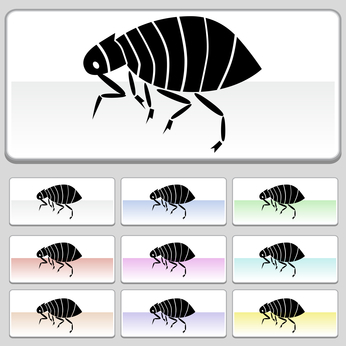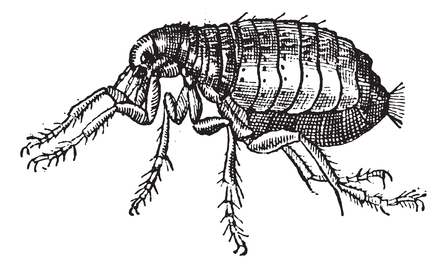Flea-Spread Diseases: Prevention Is Better Than Cure
- Esther M.
- Jul-31-2021
- Pest Control
There’s a quote that says “He who loves the rose must put up with thorns too”. It speaks of the unpleasant nature of thorns that accompany the beautiful roses. The same is true for pets. As much as you love their company, you can’t ignore the fact that they often carry some organisms. Yes, it is common to find one or two fleas on your pet, but what happens when there is a full-blown infestation in your home?
Have you ever thought of the diseases you are at risk of contracting from fleas? Below you will find three flea-spread diseases that are found worldwide. These are the Bubonic Plague, the Murine Typhus, and Tungiasis.
Bubonic plague

The bubonic plague is also called the Black Death. It has a history in Europe where it killed over 24 million people. The main carriers of the disease are fleas but the fleas would be transported by rats and on coming into contact with people, especially on ships, the people would fall ill and most would die.
The plague is caused by bacteria called Yersinia pestis. It’s usually spread by fleas. These bugs pick up the germs when they bite infected animals like rats, mice, or squirrels. Then they pass it to the next animal or person they bite. You can also catch the plague directly from infected animals or people.
Thanks to treatment and prevention, the plague is rare now. Only a few thousand people around the world get it each year. Most of the cases are in Africa (especially the Democratic Republic of Congo and Madagascar), India, and Peru.
The U.S. sees about seven cases a year, mostly in rural or remote areas in Southwestern states like Arizona, Colorado, New Mexico, and California. Read more from WebMD…
Murine typhus

The Murine Typhus is caused by bacteria called Rickettsia Typhi. Fleas mainly get this bacteria when they bite infected cats, rats, and any other wild animal. When the fleas bite human beings seeking their blood, they also leave their fecal matter in your blood, thus spreading the virus.
Where does it come from?
Rats and their fleas are the natural reservoirs (animals that both maintain and transmit the disease organism) for flea-borne typhus. Other animals, such as opossums and domestic cats, may also be involved in the transmission of flea-borne typhus. Fleas, such as the rat flea, Xenopsylla cheopis, and the cat flea, Ctenocephalides felis, are the most common vectors (animals that transfer the disease from one host to another) of flea-borne typhus.
How do I get it?
People get flea-borne typhus from an infected flea. Most fleas defecate while biting; the feces of infected fleas contain the rickettsial organism. The rickettsiae enter the body through the bite wound or from a person scratching the bite area. It is possible to get flea-borne typhus by inhaling contaminated, dried flea feces. However, this method of transmission is not as common as transmission from a biting flea. Read more from The Department of Health Services Texas…
Tungiasis

When female sand fleas get into your skin you get tungiasis. The fleas are mainly in the feet. Tungiasis is also called the jigger or the chigoe. You treat the infection by removing the flea using forceps and treating the wound thereafter.
This is how it is transmitted:
The female sand flea burrows into the skin and sucks the host’s blood before producing eggs. The flea typically lives for 4–6 weeks, after which the eggs are expelled and fall to the ground. The toes, sole, lateral rim of the foot and heel are common sites, and 99% of all lesions occur on the feet. Considerable itching and pain occur as the female fleas develop fully and increase their body volume by a factor of 2000 within one week. Bacterial infections in the lesions can cause abscesses, suppuration or lymphangitis. Multiple lesions and intense local inflammation exacerbate the pain and restrict mobility.
Several mammalian species can act as reservoirs for human infection. In rural areas, these are predominantly pigs and bovines; in resource-poor urban communities, dogs, cats, and rats. In some areas, infection can be transmitted without an animal. Read more from WHO…
These diseases are not so common in the US but the few that have been found tend to be very dangerous. So as to avoid exposing yourself, you can invite a pest control company to do a proper preventative treatment of your home. You can call us, Backyard Bug Patrol today and we will come right away.
